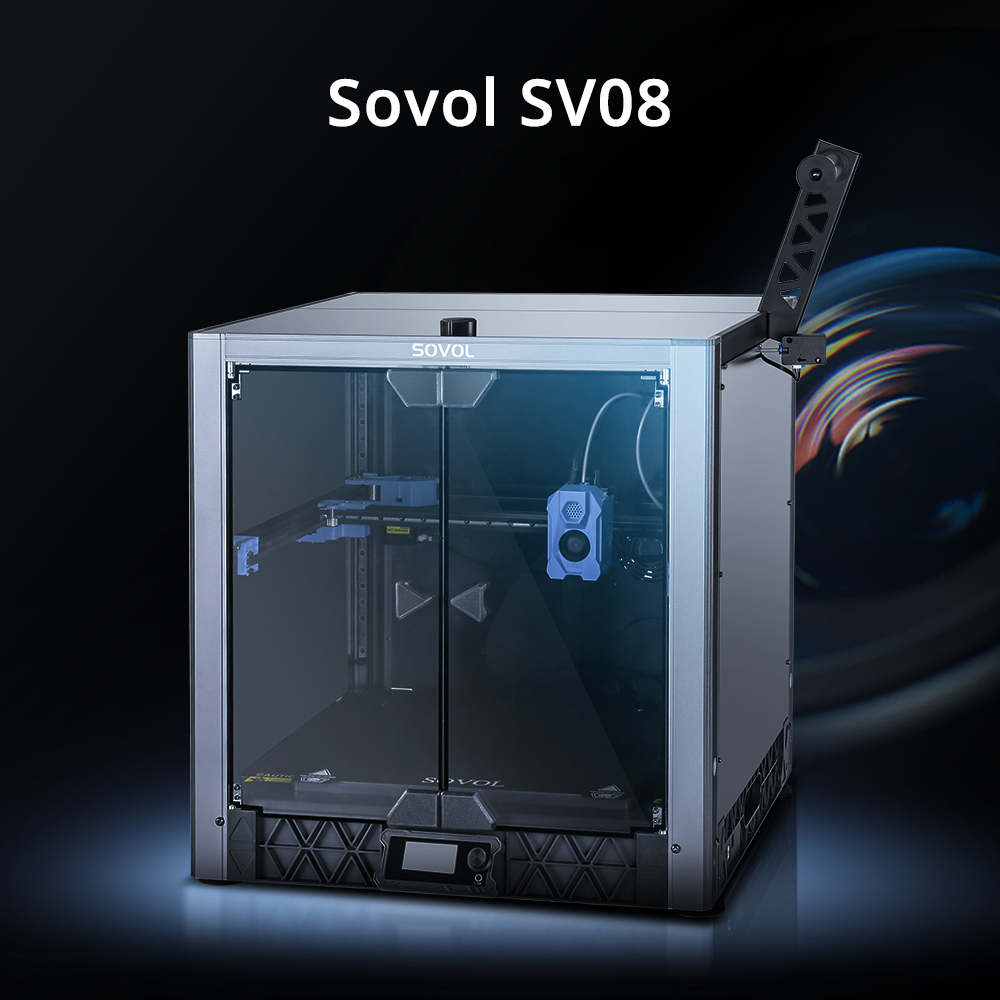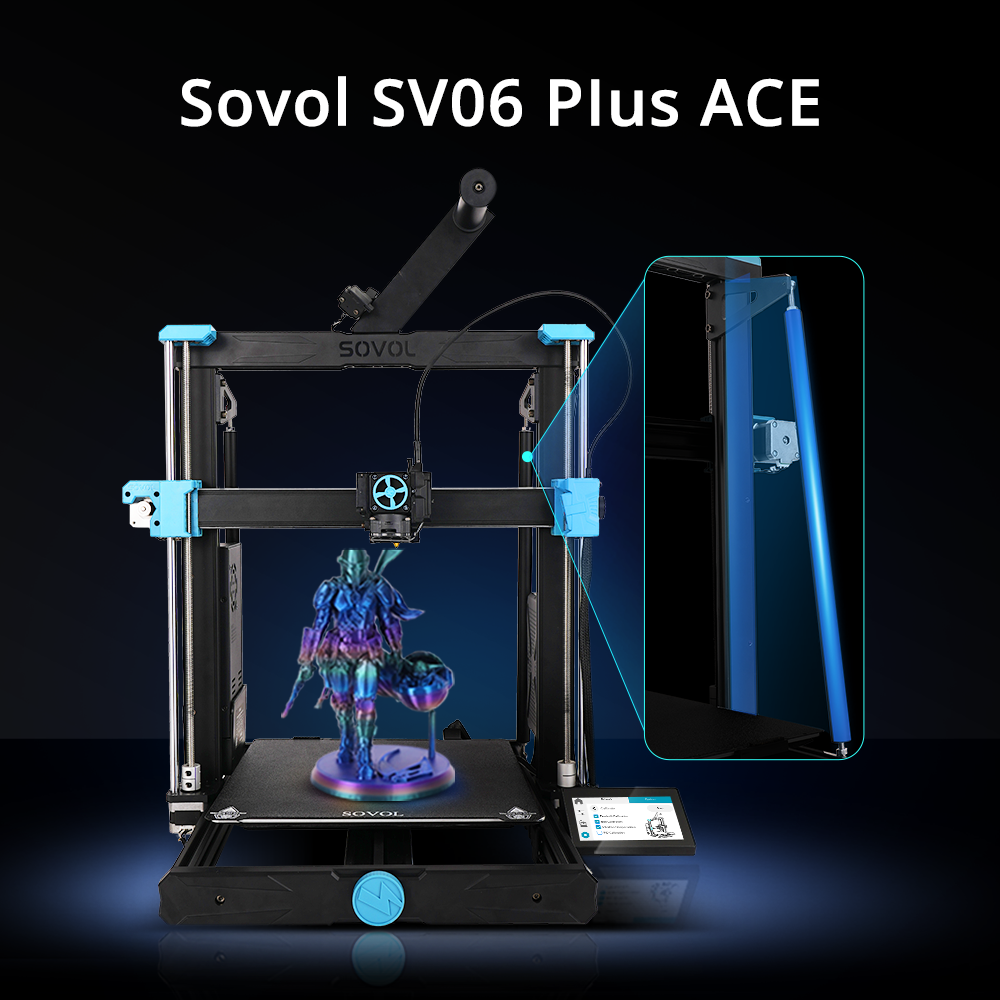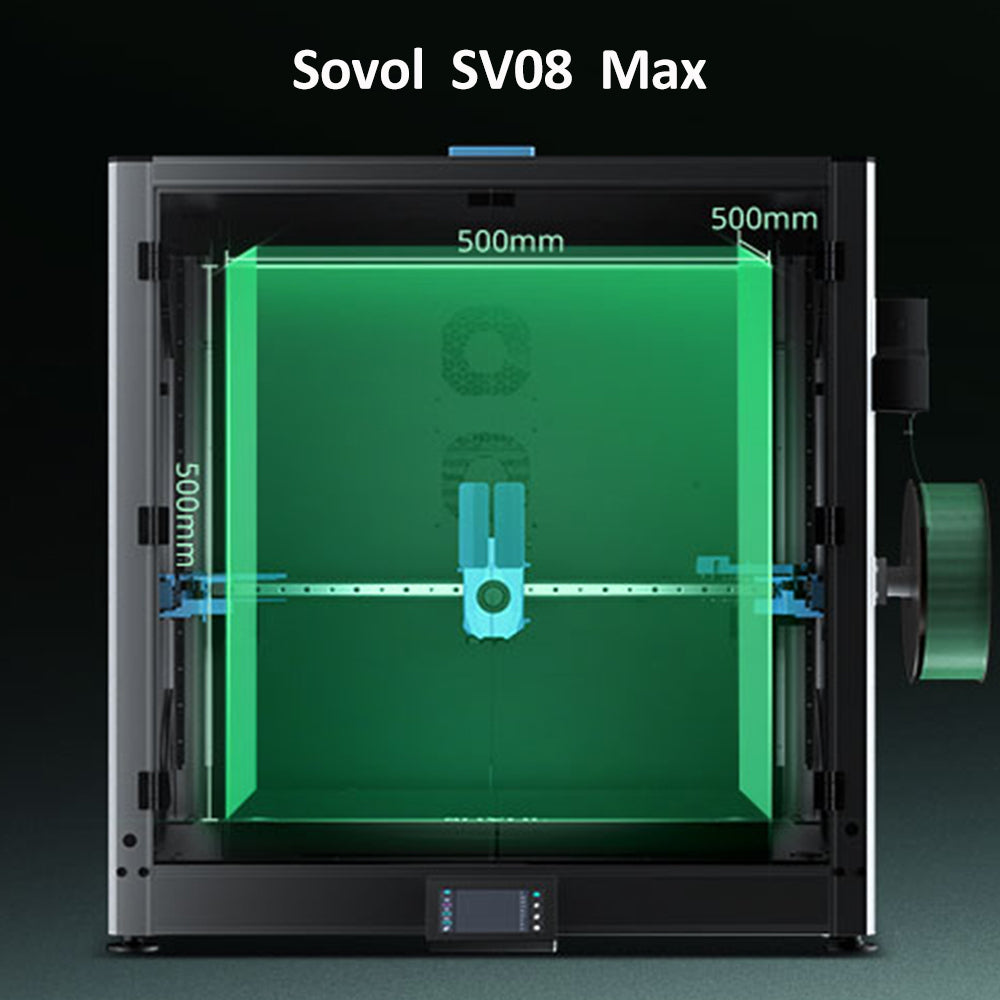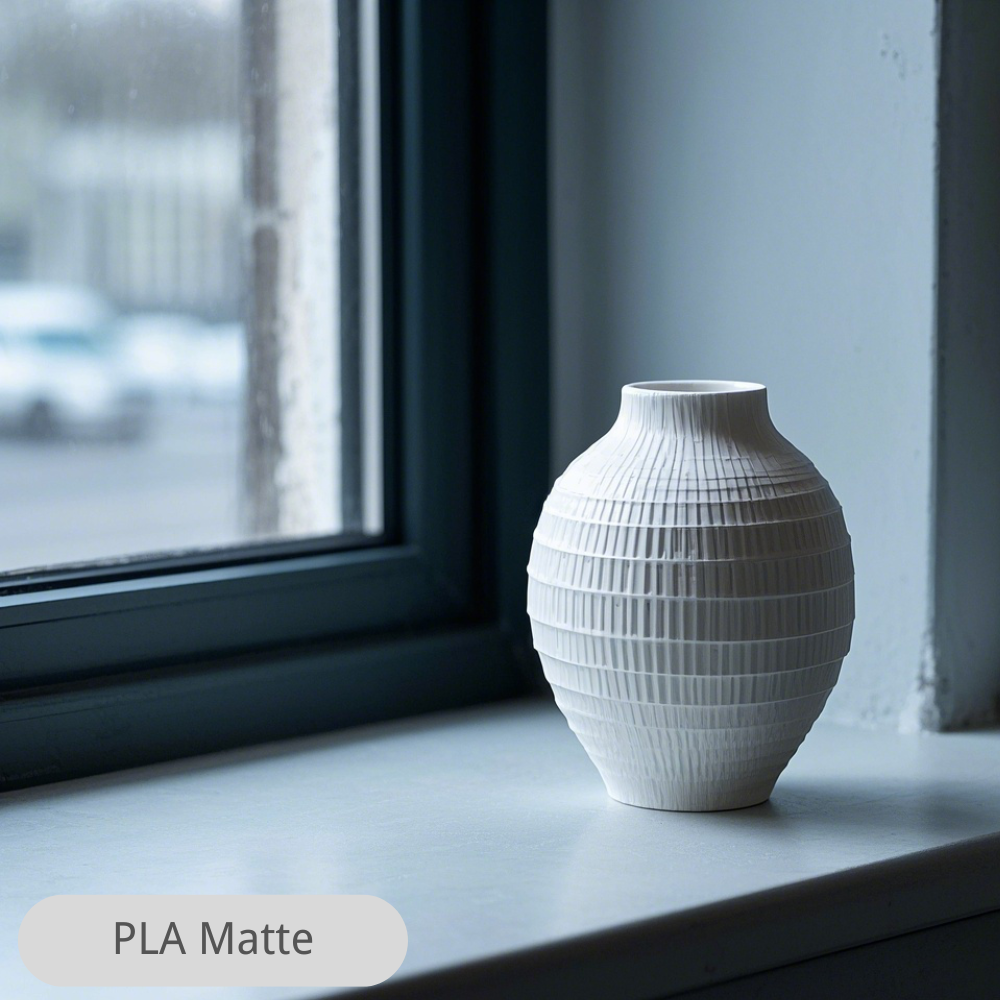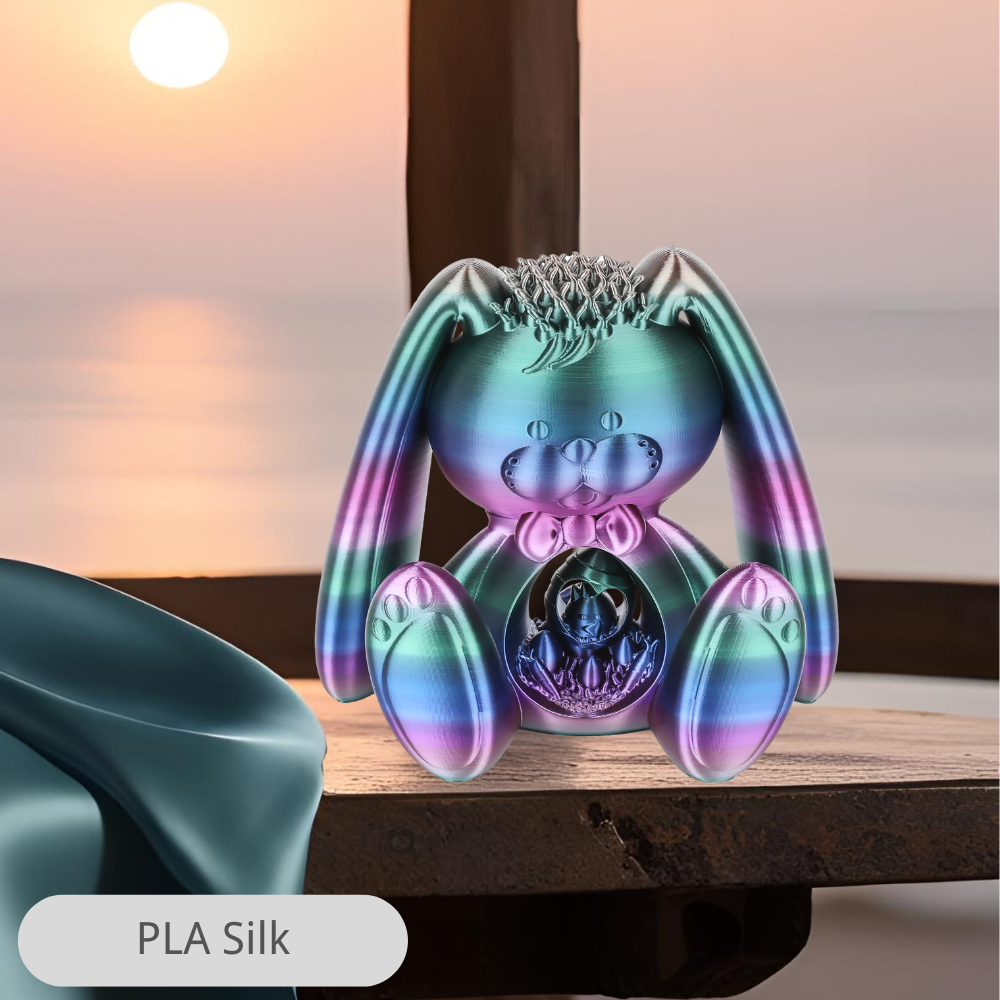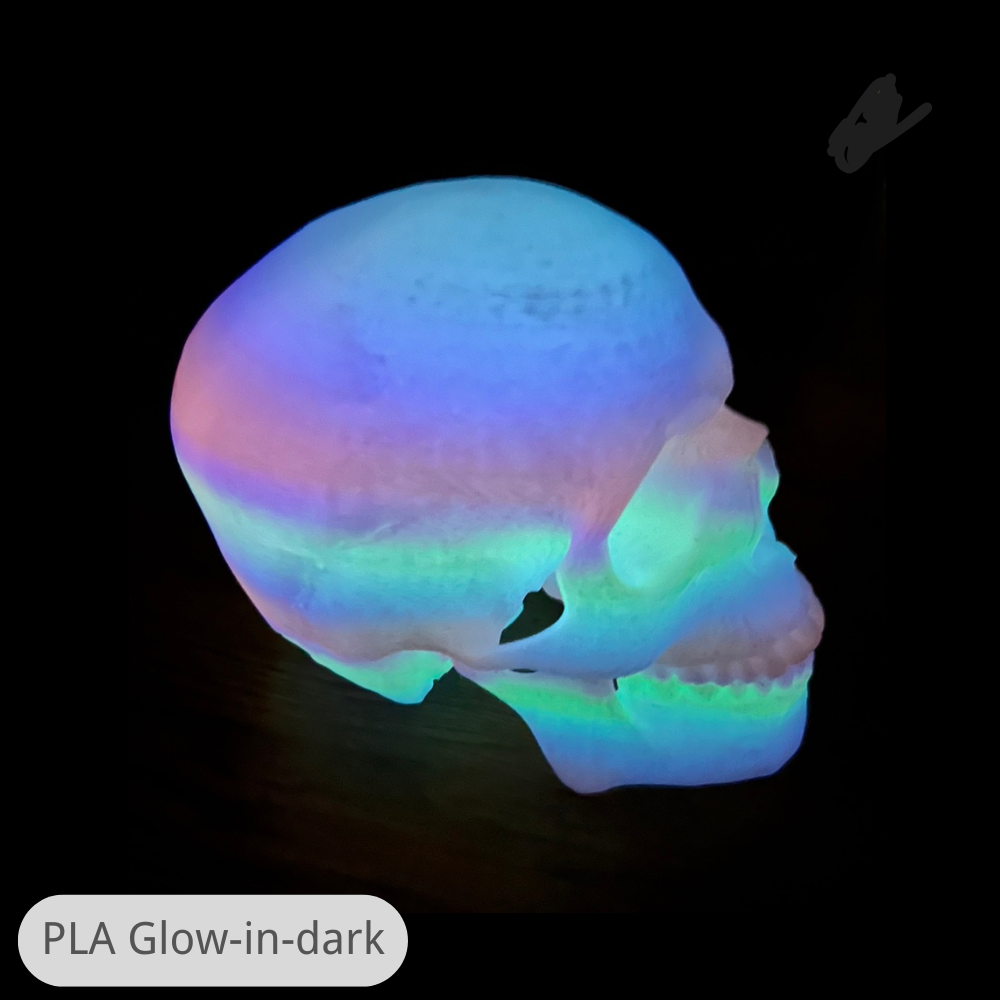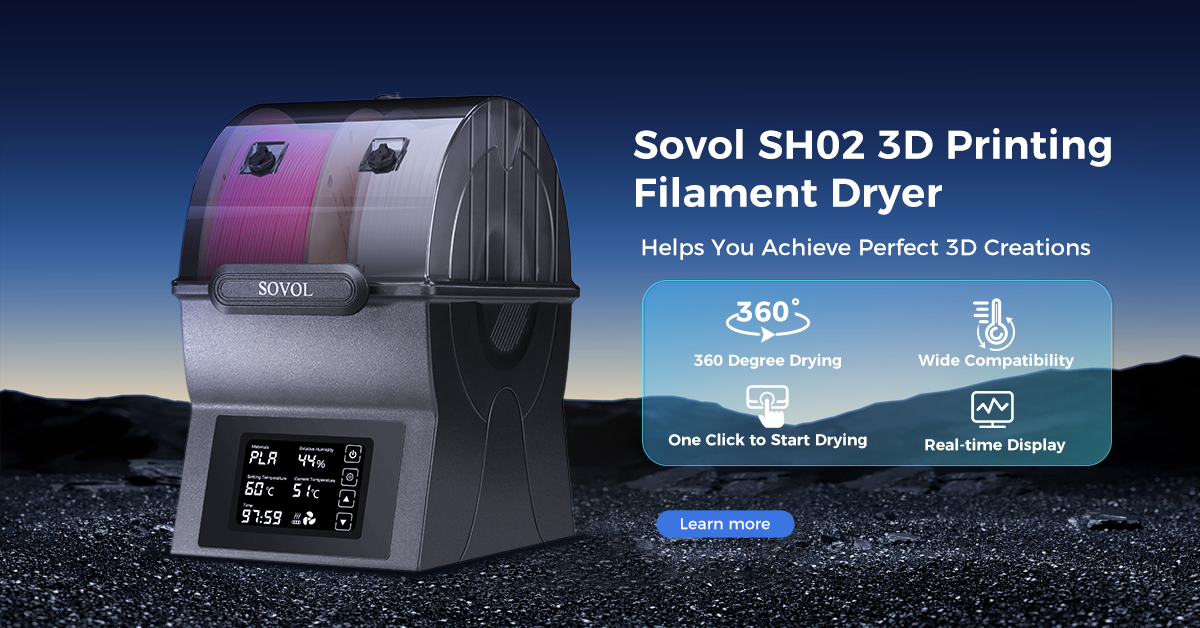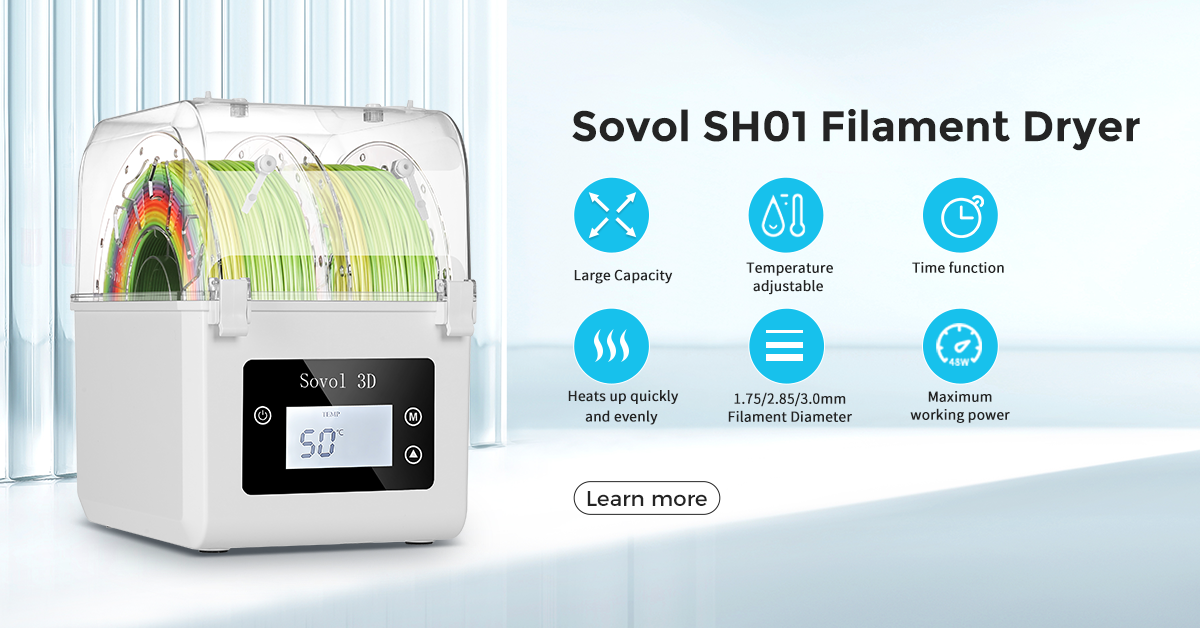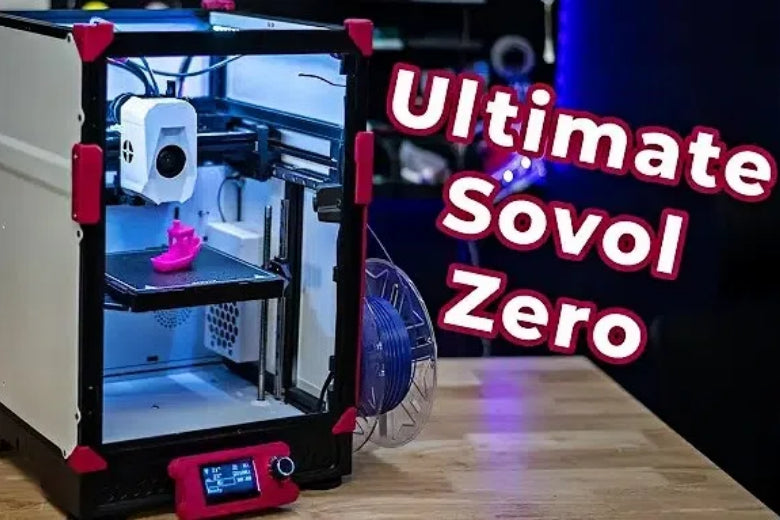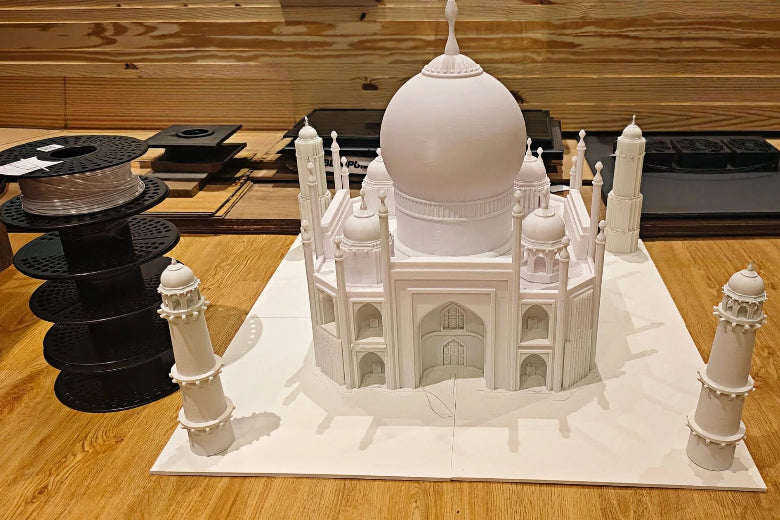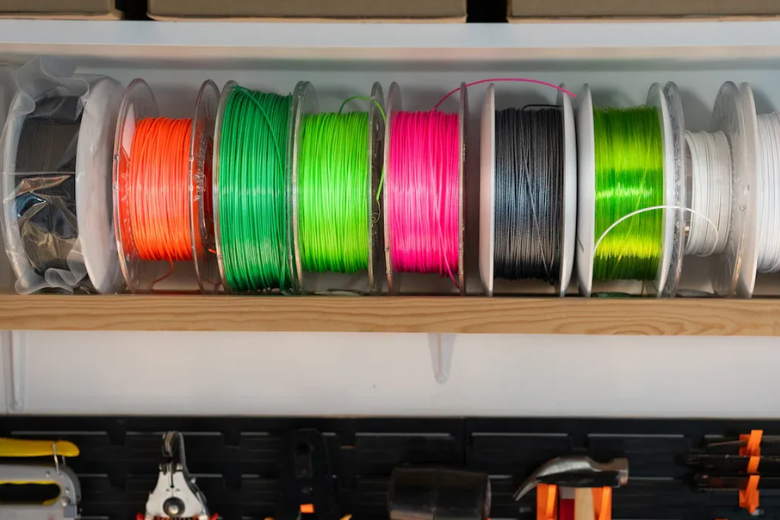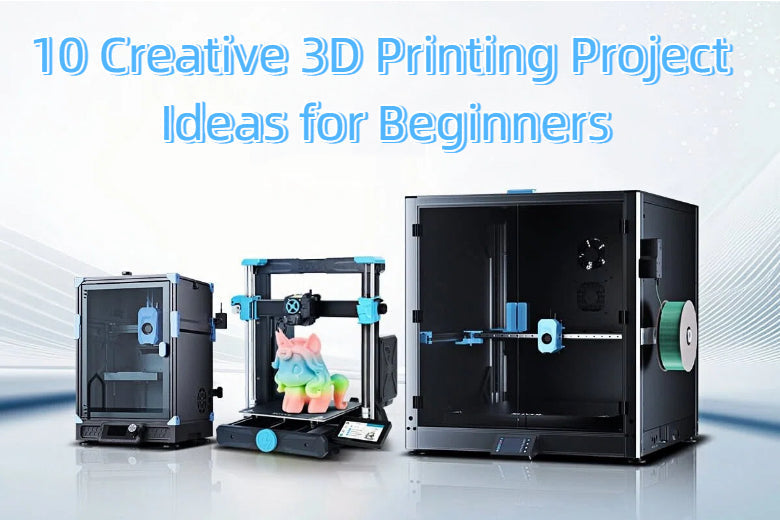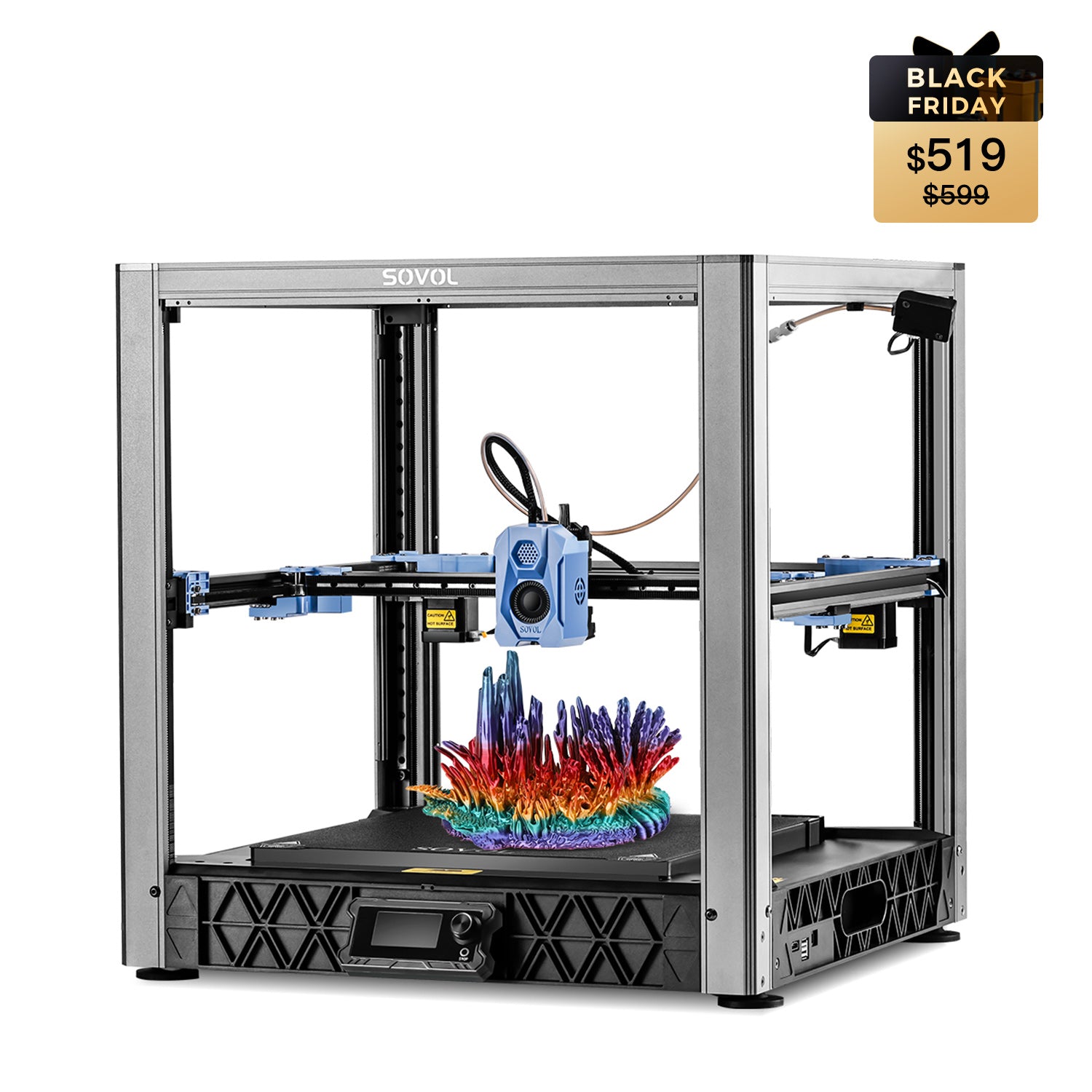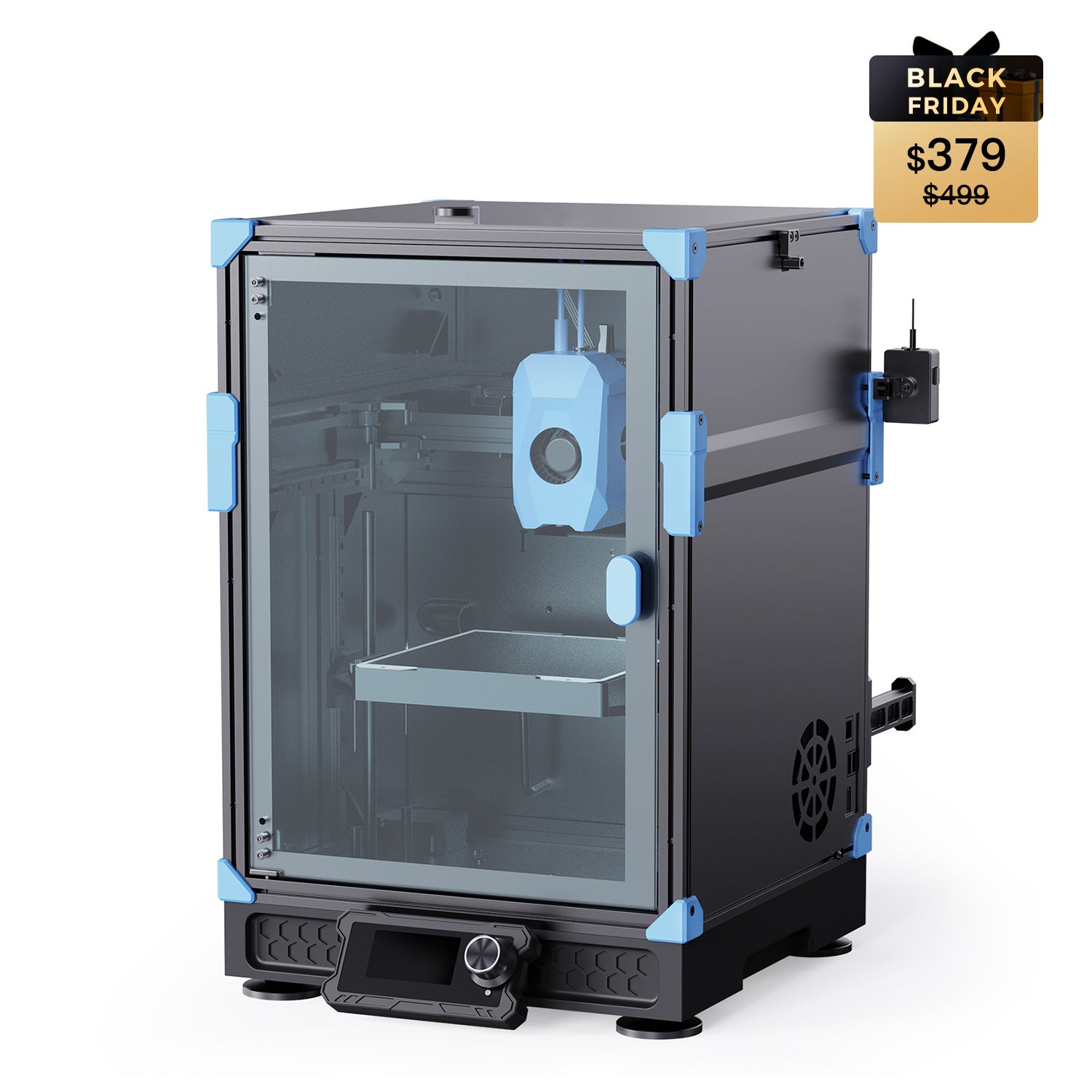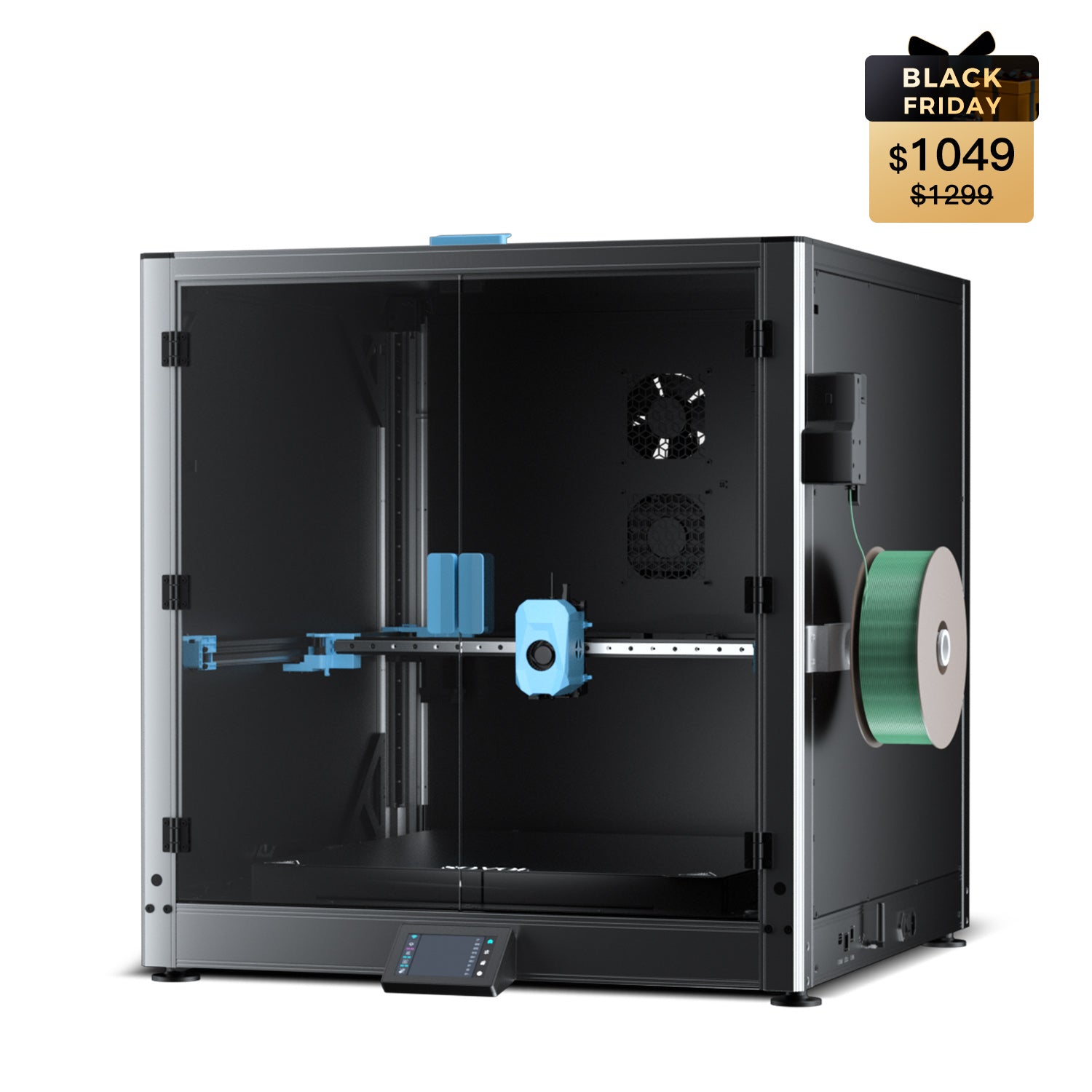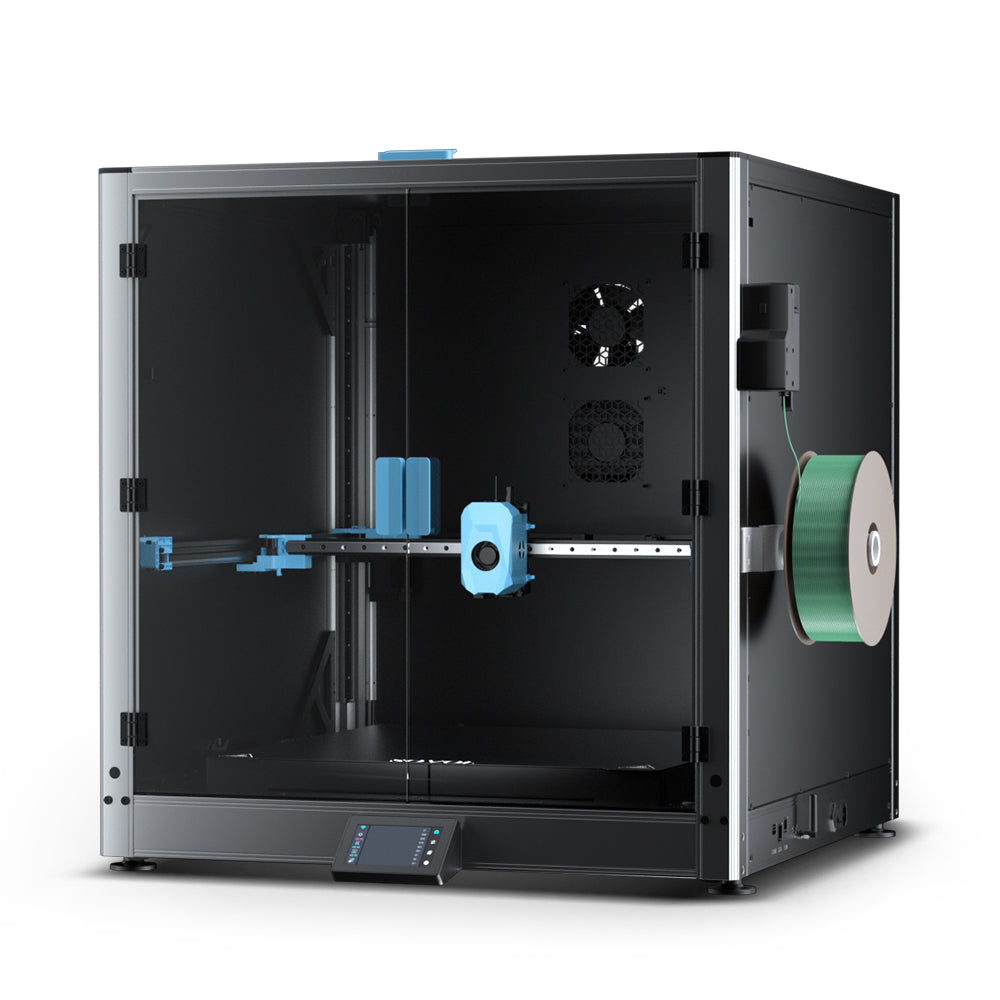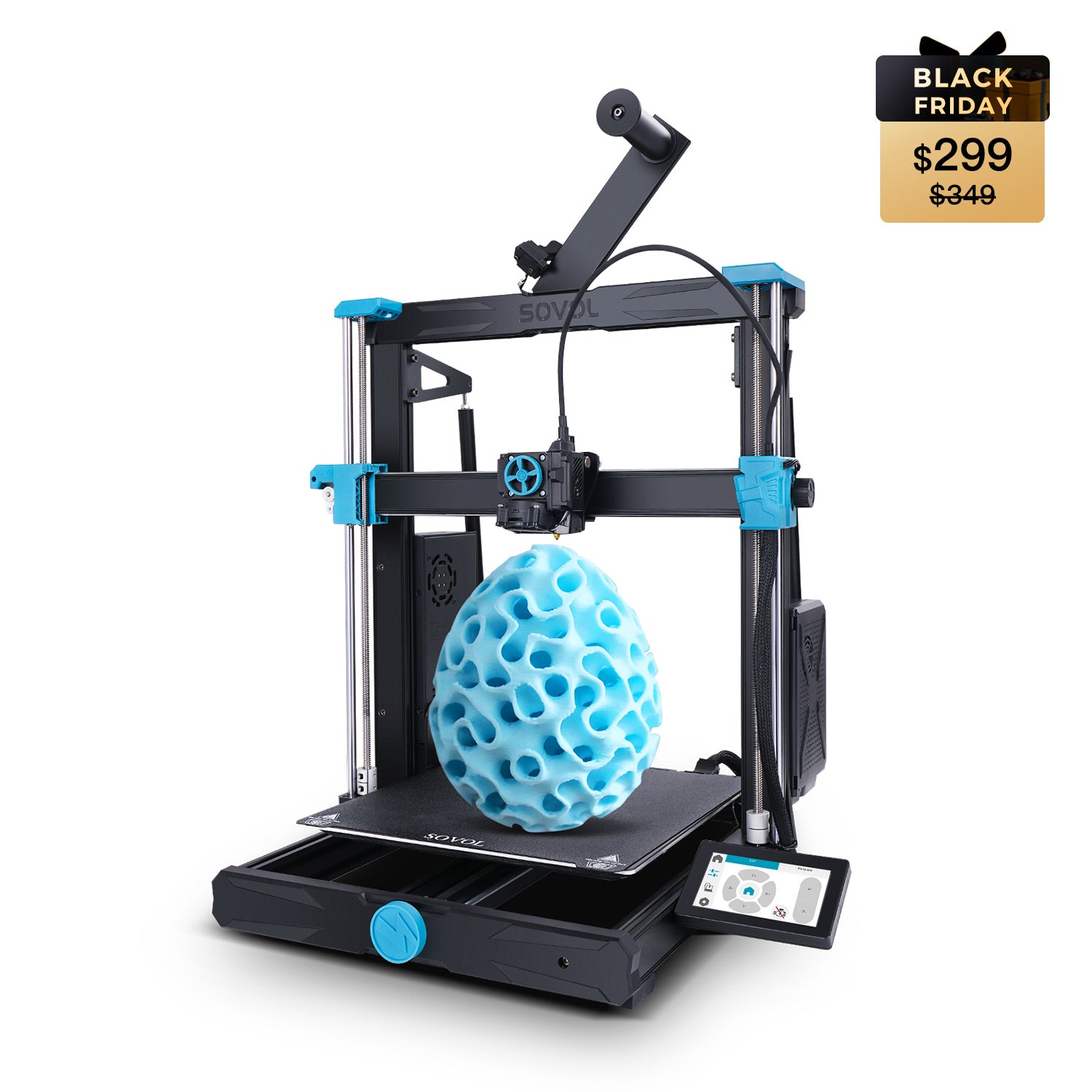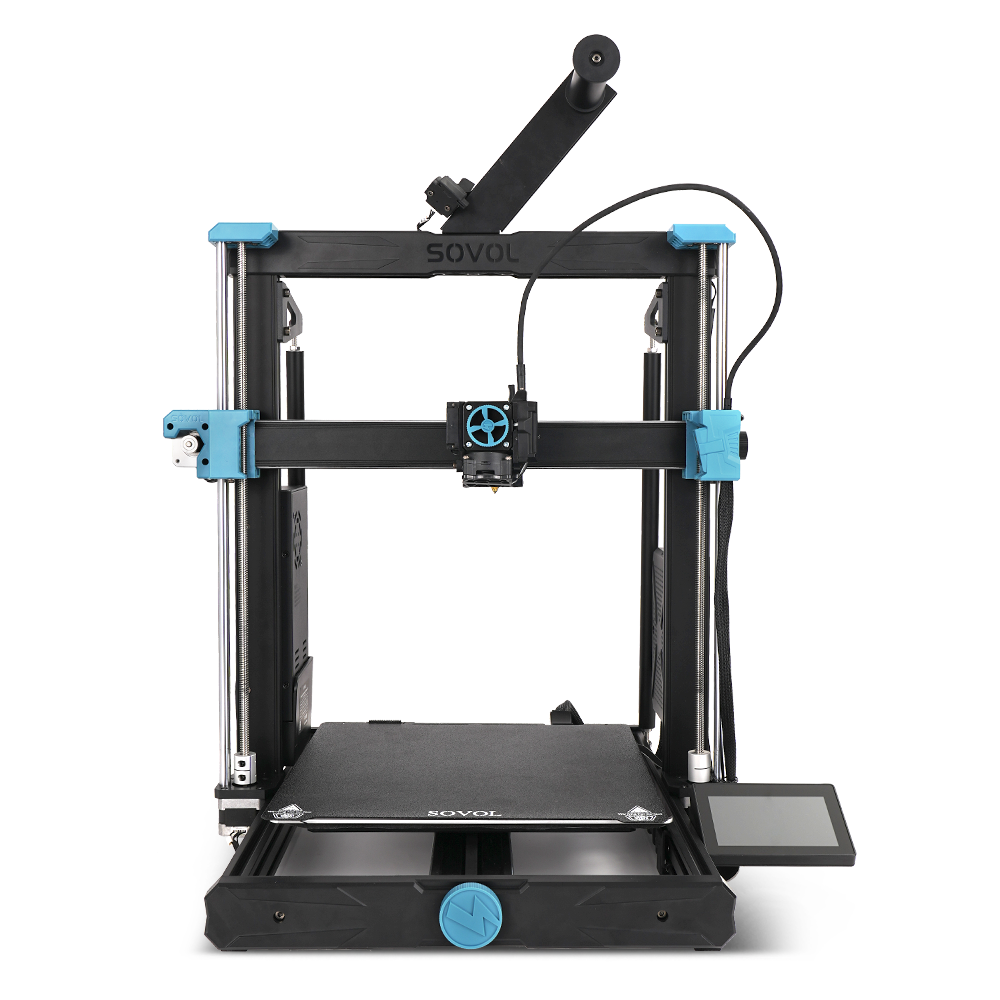The Sovol Zero 3D Printer is a great choice for people who want fast and accurate prints. Sovol made the Zero with a fast CoreXY system and smart 3.0 auto-leveling. This makes it different from the Voron 0 and Bambu Lab P1P. Sovol Zero can use high-temperature filaments and is easy to put together. Sovol made the Zero small, so it works for beginners and experts. Sovol Zero 3D Printer changes what Sovol users expect if they want the best performance from their Zero.
Key Takeaways
- Sovol Zero prints fast and with good detail. This is because it uses a CoreXY motion system. It also has smart features like input shaping.
- The printer comes almost fully built. This makes setup fast and simple. Both beginners and experts can use it easily.
- It works with many materials. You can use high-temperature filaments like carbon fiber and PC. This lets you print many different things.
- It has built-in tools like auto-leveling, a camera, and air filtration. These tools make printing safer and easier.
- Sovol Zero is good for hobbyists, professionals, and engineers. It is small, reliable, and prints fast.
Sovol Zero 3D Printer Overview
Key Features
The Sovol Zero 3D Printer is special because it uses new technology and is easy for people to use. Sovol made the Zero with a CoreXY motion system. This helps it move fast and very accurately. The Zero can print at speeds up to 1200 mm/s. That makes it one of the fastest small printers you can buy. Sovol added a 3.0 auto-leveling system that uses eddy current scanning and pressure sensing. This system helps the Zero make perfect first layers without much work from the user.
Sovol made the Zero to be strong and simple to use. Most of the printer comes already put together, so you can start printing fast. The enclosed frame and linear rails make it quiet and steady when printing. Sovol also put in a camera, real-time chamber monitoring, and air filtration. These features help keep printing safe and smart. The Zero can use high-temperature filaments. This means you can print with materials like PA, PC, and carbon fiber composites.
Note: Sovol’s customer support gets great reviews. They have 98% positive feedback and answer quickly.
Key Specifications of Sovol Zero 3D Printer
|
Specification |
Figure/Detail |
|---|---|
|
Build Volume |
152 x 152 x 150 mm |
|
Print Speed |
Up to 1200 mm/s |
|
Layer Height Range |
0.05 – 0.3 mm |
|
Technology |
CoreXY motion system |
|
Print Core Lifespan |
Rated for 2000+ hours |
Who Should Buy
The Sovol Zero is good for many types of users. Sovol made the Zero for people who want prints that are fast, reliable, and accurate. The Zero is great for:
- Designers who need models and prototypes quickly.
- Engineers who want small parts that are exact.
- Hobbyists who like speed and cool features.
- Anyone who wants a small 3D printer that is easy to set up and works well.
Sovol made the Zero for fast prototyping and making small parts. The CoreXY motion, linear rails, and input shaping help users get great results fast. People who need quick and accurate prints will like the Sovol Zero 3D Printer the most.
Design and Build
CoreXY Motion System
Sovol made the Zero with a corexy motion system. This makes it different from many small 3D printers. The Zero uses linear rails on every axis. These rails help the printer move smoothly and stay strong. The corexy design keeps moving parts light. This lets the Zero print very fast, up to 1200 mm/s. It can also speed up quickly, reaching 40,000 mm/s². Sovol added input shaping and pressure advance. These features help the printer stay accurate, even when printing fast. A silicone pad helps stop shaking. This means prints look clean and have less ringing. The table below shows how the corexy system gives both speed and accuracy:
|
Performance Metric |
Value/Description |
|---|---|
|
Maximum Print Speed |
Up to 1200 mm/s |
|
Acceleration Rate |
40,000 mm/s² |
|
Positional Deviation |
≤0.02 mm during acceleration tests |
|
Ringing Artifacts Reduction |
92% reduction compared to non-corexy systems |
|
Frame Rigidity |
180% increase over previous Sovol models |
Assembly
Sovol made the Zero simple to set up. Most of the printer comes already put together. This means you do not spend much time building it. Sovol gives clear instructions to help you finish setup. Most parts are already attached when you open the box. Even beginners can start printing fast with the Zero. The pre-assembled design keeps the printer strong. This helps it print fast without shaking. Many people like how solid and stable the Zero feels.
Tip: The Zero is sturdy and comes mostly built. This means you get less trouble and better prints right away.
Build Volume and Size
The Zero is small but still has a good build area. The print space is 152.4 x 152.4 x 152.5 mm³. This size is great for small parts and detailed models. The Zero fits on most desks or work tables. It has an enclosed frame and a double-sided PEI steel plate. These features make it easy to use many types of filament. You can print at high temperatures without losing space or quality. The Zero’s size and build area work well at home or at work.
Features
Auto-Leveling
Sovol made the Sovol Zero with a new 3.0 auto-leveling system. This system uses eddy current scanning and pressure sensing together. It quickly checks the print bed and changes the Z-axis grid. This helps users get good first layers with little work. The auto bed leveling is fast and accurate, so setup is easy for everyone. Sovol’s leveling gives steady results, even for long prints. The Zero’s CoreXY kinematics and Klipper firmware help make prints more exact. Studies show this design works well for tricky, multicolor prints and long projects. It also helps remove supports and keeps models strong.
High-Temperature Support
The Sovol Zero can use high-temperature filaments. Sovol gives the Zero a brass nozzle and an AC heated bed. The table below shows the temperature limits and what materials you can use:
|
Feature |
Specification |
|---|---|
|
Maximum Nozzle Temp |
|
|
Heated Bed Temp |
Up to 120°C (248°F) |
|
Supported Filaments |
PLA, PETG, TPU, PETG-CF, ABS, ASA, PA, PC |
|
Nozzle Type |
High-temperature brass nozzle |
|
Heated Bed Type |
AC heated bed with fast heat-up and stable temperature |
These features let the Zero print with tough materials like PA, PC, ABS, ASA, and carbon fiber. Sovol’s hardware keeps the printer steady for hard projects.
Connectivity and Monitoring
Sovol put modern connection and monitoring tools in the Sovol Zero. The printer works with Ethernet and Wi-Fi, so you can control it from far away. The built-in camera lets you watch prints live and make time-lapse videos with Obico software. The Zero also has an air filter to keep your space safe. Sovol’s open-source system lets you change settings as you like. The printer’s smart features, like pressure advance, input shaping, and adaptive area detection, help prints look better and finish faster. Users get remote access, AI failure checks, and an easy-to-use screen, making the Sovol Zero a smart pick for any place.
Performance
Print Speed
Sovol Zero is very fast when printing. The CoreXY system and linear rails help it move quickly. It can print up to 1200 mm/s. Most people see real speeds of 700 mm/s for detailed prints. Sovol Zero can finish a Benchy model in about 9 minutes. This is much faster than other small printers. The table below shows how Sovol Zero compares to others:
|
Printer |
Maximum Speed (mm/s) |
Typical Benchy Print Time |
Focus |
|---|---|---|---|
|
Sovol Zero |
1200 |
Approximately 9 minutes |
Speed |
|
Voron Zero |
250 |
Approximately 25 minutes |
Precision |
Sovol Zero can speed up to 40,000 mm/s². It can push out 35 mm³/s for all layer sizes. Silicone pads and input shaping help stop shaking and noise. This means users get fast and steady prints.
Print Quality
Sovol Zero makes prints that look great and have lots of detail. It can move as close as 0.02 mm, so parts are very exact. The printer keeps sizes within ±0.15% of what you want. This matches what factories need. The CoreXY system and rails keep the printer steady, even when it is fast. Input shaping helps stop lines and marks by 92%. Smart sensors and live feedback can find and fix mistakes while printing. The table below shows important print quality facts:
|
Indicator |
Measurement/Feature |
Impact on Print Quality |
|---|---|---|
|
Dimensional Accuracy |
±0.15% tolerance |
Exact fit for parts |
|
Positional Accuracy |
≤0.02 mm |
High detail and sharp edges |
|
Motion System |
CoreXY, linear rails |
Stable, smooth movement |
|
Input Shaping |
Advanced firmware |
Clean surfaces, less ringing |
Supported Materials
Sovol Zero works with many types of filament. The brass nozzle can get as hot as 350°C. The heated bed can reach 120°C. You can use both regular and special filaments. Supported materials are:
- PLA
- PETG
- TPU
- PETG-CF
- ABS
- ASA
- PA
- PC
- Carbon fiber composites
Sovol Zero’s hardware and smart tools help make good prints with each material. You can change filaments easily and get good results every time.
Ease of Use
Software and Interface
Sovol made the Zero 3D Printer easy for everyone to use. The printer works with OrcaSlicer software on Windows and Mac. You can send print jobs using G-code files. Setting up the software is fast. Wi-Fi lets you control the printer from any web browser. This means you can start, pause, or check prints from far away.
Many people think the Sovol Zero’s interface is simple and clear. The touchscreen is quick and shows important details. The printer has automatic bed leveling. It uses eddy current scanning and pressure sensing. This means you do not need to adjust things by hand. Features like pressure advance and input shaping help you get better prints with less work. The built-in camera and AI system let you watch prints live. You can pause printing if something goes wrong.
- People say the Sovol Zero is easy to set up and use. You only need a little tuning for good prints.
- The printer comes mostly built, so setup is fast.
- The web interface and Wi-Fi controls are easy to understand.
- Watching prints live and automatic pausing make printing better.
Maintenance
Sovol made the Zero so it is easy to take care of. The design lets you reach important parts quickly. The linear rails and closed frame keep dust away from moving parts. Cleaning the print bed and nozzle often keeps prints looking good. The air filter helps keep your work area clean and safe.
You can change the nozzle and other parts without special tools. The firmware can be updated to add new features or fix problems. Most people find the printer does not need much care to work well. Online guides help you fix small problems fast. This makes the Sovol Zero a good choice for daily printing.
Comparison: Sovol Zero vs Voron 0 vs Bambu Lab P1P
Design and Assembly
Sovol Zero is small and has a strong, closed frame. It uses CoreXY and has linear rails on every axis. This makes it feel sturdy and helps it move smoothly. Most people get the Zero almost fully built. This means you can start fast and it is easy for new users. The printer comes with a camera, air filter, and filament sensor already inside. You do not need to add extra parts.
Voron 0 is different. It also uses CoreXY, but you build it yourself. You must find some parts and spend a lot of time putting it together. This is good for people who like to build and change things. The open frame lets you add many upgrades. But it can be loud and not as safe for hot materials.
Bambu Lab P1P has a strong, open frame. It comes mostly built, but you might need to add panels or extras. The P1P does not use CoreXY, so speed and steadiness are different. You can add more features later if you want.
Note: Sovol Zero comes almost ready to use. This saves time and helps you avoid mistakes. It is great for people who want to print right away.
Speed and Precision
Sovol Zero is the fastest here. It can print up to 1200 mm/s and speed up to 40,000 mm/s². The CoreXY and rails help it stay exact, even when printing fast. Input shaping and pressure advance make prints look better. The Zero can finish a Benchy in about 9 minutes. That is much quicker than most small printers.
Voron 0 is made for accuracy. It prints slower, up to 250 mm/s. You can adjust it for better detail, but it is not as fast as Sovol Zero. The open-source software lets you change many settings, but you need to know more.
Bambu Lab P1P is pretty fast, but not as quick as Sovol Zero. It can print up to 500 mm/s. The motion system helps with accuracy, but the open frame can shake at high speeds. The P1P tries to balance speed and print quality.
|
Printer |
Max Speed (mm/s) |
Acceleration (mm/s²) |
CoreXY |
Linear Rails |
Input Shaping |
Typical Benchy Time |
|---|---|---|---|---|---|---|
|
Sovol Zero |
1200 |
40,000 |
Yes |
Yes |
Yes |
~9 min |
|
Voron 0 |
250 |
10,000 |
Yes |
Optional |
Yes |
~25 min |
|
Bambu Lab P1P |
500 |
20,000 |
No |
No |
Yes |
~15 min |
Features and Usability
Sovol Zero has many cool features already built in. It has 3.0 auto-leveling that uses special sensors. This makes leveling the bed quick and easy. The Zero can use hot filaments with its 350°C nozzle and 120°C bed. You can watch prints live with the camera and control it from far away with Wi-Fi or Ethernet. The air filter keeps your area clean. The Zero works with open-source slicers and software, so you can change things if you want.
Voron 0 lets you add lots of upgrades. You can put in auto-leveling, cameras, or air filters, but you have to do it yourself. These are not included when you buy it. People who like to tinker and try new things will enjoy this printer.
Bambu Lab P1P is easy to use. It has auto bed leveling and you can watch prints from another room. Some things, like the camera or air filter, cost extra. The P1P uses its own system, so you cannot change as much, but it works well.
Tip: Sovol Zero’s built-in features help you get great prints without needing to buy or install more parts.
Price and Value
Sovol Zero gives you a lot for the price. It has fast printing, strong parts, and many features for a good cost. You get a printer that is almost ready to use. The Zero works with open-source software, so you can upgrade it later.
Voron 0 costs less at first, but you need to buy more parts. You also spend a lot of time building it. If you add things like auto-leveling or a camera, the price goes up. This printer is best for people who like to build and change things.
Bambu Lab P1P costs more. It is easy to use and prints fast, but you pay extra for more features. The closed system means you cannot upgrade as much. It is good for people who want a simple printer and do not want to change it.
|
Printer |
Assembly Required |
Key Features Included |
Upgrade Potential |
|---|---|---|---|
|
Sovol Zero |
Minimal |
Auto-leveling, camera, air filter, high-temp support |
High (open-source) |
|
Voron 0 |
Extensive |
CoreXY, open-source |
Very High |
|
Bambu Lab P1P |
Minimal |
Auto-leveling, remote control |
Moderate |
If you want speed, features, and a good price, Sovol Zero is a top pick for small CoreXY printers.
Pros and Cons
Advantages
The Sovol Zero 3D Printer is special among small 3D printers. Many people and experts like how it works and looks. People pick this printer because it is fast, accurate, and works well.
- Sovol Zero can print very fast, up to 1200 mm/s. This helps people finish their work quickly.
- The CoreXY motion system lets the printer move fast and stay exact. Prints stay correct, even when printing quickly.
- Linear rails on each axis make the printer steady. These rails help make parts smooth and detailed.
- Input shaping technology cuts down on shaking. This makes prints look better and keeps surfaces nice.
- The printer comes almost ready to use. You can start printing soon after opening the box.
- The 3.0 auto-leveling uses eddy current scanning and pressure sensing. This helps get a perfect first layer with little work.
- Sovol Zero can use high-temperature filaments. You can print with special materials like PA, PC, and carbon fiber.
- It has a camera, air filter, and remote monitoring built in. These features make printing safer and easier.
- The open-source design means you can change and upgrade the printer.
Many people say Sovol Zero is super fast and very exact. It is great for making small parts and testing ideas quickly.
Limitations
All 3D printers have things they cannot do. Sovol Zero is made for speed and being small, so it works best for certain jobs.
- The build area is 152.4 x 152.4 x 152.5 mm³. This is good for small models and parts.
- The small frame fits on desks but is not for big prints.
- Some features, like high-temperature printing and input shaping, need learning. New users may need time to understand them.
- Sovol Zero is best for people who want a fast, exact, and steady small printer.
People who want a quick, steady, and full-featured small 3D printer will like the Sovol Zero for their work.
Best Use Cases
Hobbyists and Makers
Many hobbyists and makers want a 3D printer that is fast and flexible. Sovol Zero gives them these things with its modular design and open-source features. Users can fix or upgrade the printer without much trouble. This helps save money and lets people change the printer how they want. The open source MMU technology lets you print with many colors and materials in one project. Makers who like to try new colors and materials find this very useful.
- You can upgrade or fix parts easily because of modularity.
- Printing with many colors and materials helps with creative ideas.
- A strong community helps with problems and shares tips.
- Cheap parts and fixing it yourself help save money.
Sovol Zero is good for people who want to learn and talk with others. The active user group shares advice, changes, and print settings. This helps people be creative and solve problems. Hobbyists can make new ideas fast and print detailed models with high accuracy. The small size fits well in home workshops or maker spaces.
Tip: Makers who want to save money and have more options will like Sovol Zero’s design and support group.
Professionals and Engineers
Professionals and engineers need tools that work well and are fast. Sovol Zero gives them quick prints and very exact results. The CoreXY motion system and smart auto-leveling help make prints come out the same every time. Engineers can test new designs quickly and save time.
Sovol Zero can use high-temperature filaments, so it works for tough prototypes and special materials. Printing with many materials lets you make complex parts and use color codes. The printer’s steady work and accuracy help professionals finish jobs on time and meet quality needs.
- Fast printing helps make new products quicker.
- High accuracy makes sure parts are detailed and correct.
- Using special materials means you can do more things.
Sovol Zero is a smart pick for professionals who want a small printer that is fast, accurate, and can do many jobs.
The sovol zero is special because it prints fast and is easy to use. People who want quick prints and simple setup will like it. Professionals, hobbyists, and engineers can all use this CoreXY printer. Before buying, think about how fast you need to print, if you want to change parts, and how much you want to spend. If you want a small and speedy 3D printer, the sovol zero is a great option.
FAQ
How long does it take to set up the Sovol Zero 3D Printer?
Most people can set up the Sovol Zero in less than 30 minutes. Sovol sends the printer almost fully built. The instructions show you how to finish the last steps. Both new and experienced users think setup is fast and easy.
What materials can the Sovol Zero print?
The Sovol Zero can use many types of filament. You can print with PLA, PETG, TPU, ABS, ASA, PA, PC, and carbon fiber composites. The hot nozzle and heated bed let you use special materials.
Does the Sovol Zero require a lot of maintenance?
Taking care of the Sovol Zero is simple. You should clean the print bed and nozzle often. The closed frame and rails help keep dust away from moving parts. Most parts are easy to reach and change if you need to.
Is the Sovol Zero compatible with open-source slicers?
Yes, Sovol Zero works with any slicer that makes G-code files. OrcaSlicer profiles are included for the best results. You can also use other slicers like Cura or PrusaSlicer if you want.

